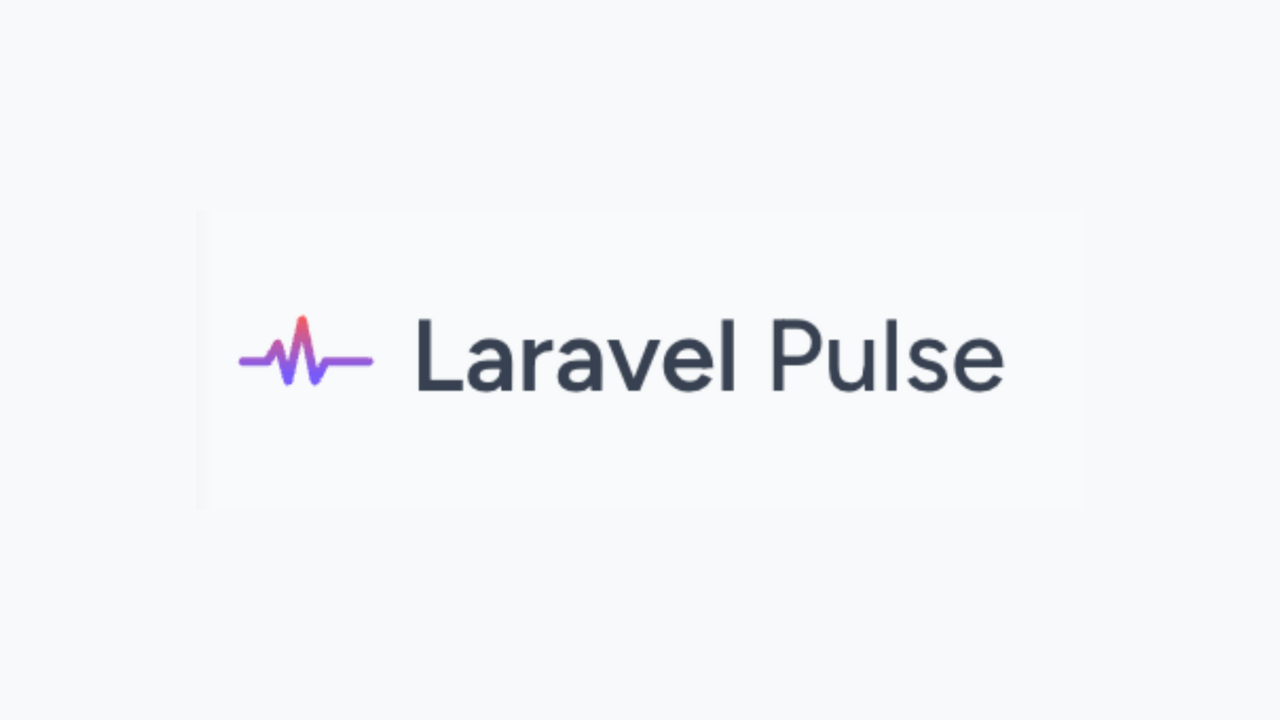Exploring Laravel Pulse A Comprehensive Guide
Laravel Pulse is a cutting-edge tool designed for monitoring and optimizing Laravel applications. This article delves into its features, benefits, and how it revolutionizes application performance tracking. Whether you’re a seasoned developer or new to Laravel, understanding Pulse can significantly enhance your application’s efficiency and reliability.
Understanding Laravel Pulse
Laravel Pulse is a powerful monitoring and performance optimization tool designed specifically for Laravel applications. It serves as a centralized dashboard that provides developers with real-time insights into their application’s health, performance, and behavior. By integrating seamlessly with Laravel, Pulse taps into the framework’s core functionalities, enabling it to collect and analyze data without requiring extensive configuration or external dependencies. Its primary purpose is to help developers identify bottlenecks, track errors, and optimize application performance, ensuring a smooth user experience.
At its core, Laravel Pulse focuses on application monitoring, offering a comprehensive view of key metrics such as request rates, response times, and database query performance. It also tracks errors and exceptions, allowing developers to pinpoint issues before they escalate. By leveraging this data, Pulse empowers developers to make informed decisions about optimizations, whether it’s refining database queries, reducing memory usage, or improving server response times. This proactive approach to monitoring ensures that applications remain efficient and reliable, even under heavy loads.
Pulse’s integration with Laravel is seamless, requiring minimal setup while providing maximum value. It complements the framework’s existing tools, such as Telescope and Horizon, by offering a broader perspective on application performance. Together, these tools create a robust ecosystem for maintaining and enhancing Laravel applications.
Key Features of Laravel Pulse
Laravel Pulse stands out as a robust monitoring tool designed to empower developers with actionable insights into their applications. One of its key features is real-time monitoring, which provides a live view of application activity, including requests, jobs, and queues. This allows developers to identify bottlenecks or unusual behavior as they occur, enabling swift intervention. Additionally, Pulse offers error tracking, capturing exceptions and logging them in a centralized dashboard. This feature simplifies debugging by providing detailed stack traces and context, helping developers resolve issues faster and improve application stability.
Another standout feature is its performance insights, which analyze response times, database queries, and cache usage. By breaking down these metrics, Pulse helps developers pinpoint inefficiencies and optimize their code. For instance, slow database queries can be identified and addressed before they impact user experience. These features collectively enhance the development workflow, reducing downtime and improving application reliability. By integrating seamlessly with Laravel, Pulse ensures developers can focus on building features while maintaining a high-performance application. Its intuitive interface and actionable data make it an indispensable tool for modern Laravel applications.
Setting Up Laravel Pulse
To set up Laravel Pulse in your Laravel application, begin by ensuring your environment meets the prerequisites. You need PHP 8.1 or higher, Laravel 10 or later, and Composer installed. Additionally, a database like MySQL or PostgreSQL is required for storing monitoring data. Start by installing Laravel Pulse via Composer by running composer require laravel/pulse. Once installed, publish the Pulse configuration file using php artisan vendor:publish –tag=pulse-config. This file allows you to customize settings such as storage drivers and sampling rates.
Next, run the migrations to create the necessary tables with php artisan migrate. Pulse uses these tables to store metrics like request times, exceptions, and queue performance. Configure your .env file to specify the database connection and other settings. If you encounter issues during setup, ensure your database credentials are correct and that the required extensions (e.g., PDO) are enabled.
Finally, start the Pulse worker using php artisan pulse:check. This worker collects and processes data in real-time. For production, consider running the worker as a background process using tools like Supervisor. With these steps, Laravel Pulse will be ready to monitor your application, providing insights into performance, errors, and usage patterns.
Navigating the Laravel Pulse Dashboard
The Laravel Pulse dashboard is a centralized hub designed to provide developers with a clear and actionable overview of their application’s performance. Once installed and configured, the dashboard presents a visually intuitive interface, divided into sections that display key metrics such as request rates, error rates, queue performance, and database query execution times. Each metric is represented using graphs, charts, and tables, making it easy to identify trends and anomalies at a glance. The layout is modular, allowing users to rearrange or resize widgets to prioritize the data most relevant to their monitoring needs.
Interpreting the data is straightforward. For instance, a spike in error rates might indicate a recent deployment issue, while slow database queries could highlight inefficiencies in your code. Pulse also provides contextual tooltips and drill-down options, enabling deeper analysis of specific metrics. Customization is a key feature of the dashboard. Developers can create custom widgets to track application-specific KPIs or filter data by time ranges, environments, or user segments. This flexibility ensures that the dashboard adapts to the unique monitoring requirements of each project, providing actionable insights without overwhelming users with unnecessary information. By leveraging these features, teams can proactively address performance bottlenecks and maintain optimal application health.
Real-Time Monitoring with Laravel Pulse
Laravel Pulse excels in providing real-time monitoring capabilities, enabling developers to track application performance and health as it happens. By leveraging its intuitive dashboard, Pulse captures and displays critical metrics such as request rates, response times, database query performance, and queue processing times. These metrics are updated in real-time, offering a dynamic view of your application’s behavior under varying loads.
One of the standout features of Pulse is its ability to monitor user activity and system resource usage. For instance, it tracks the number of active users, their interactions, and the impact of these interactions on server resources. This data is invaluable for identifying bottlenecks or spikes in traffic that could degrade performance.
The real-time nature of Pulse allows developers to make immediate improvements. For example, if a sudden increase in response times is detected, developers can quickly investigate and optimize slow database queries or scale resources accordingly. Similarly, monitoring queue processing times can help identify delays in background jobs, prompting adjustments to worker configurations.
By providing actionable insights in real-time, Laravel Pulse empowers teams to maintain optimal application performance and proactively address issues before they escalate. This seamless integration of monitoring and actionable data ensures that your application remains responsive and reliable, even under heavy usage.
Error Tracking and Resolution
Laravel Pulse excels in error tracking and resolution, offering developers a robust toolkit to identify, diagnose, and resolve issues in their applications. By leveraging its real-time monitoring capabilities, Pulse captures errors as they occur, providing detailed insights into their root causes. This includes stack traces, request data, and contextual information, enabling developers to pinpoint the exact source of the problem without sifting through logs manually.
Pulse categorizes errors based on severity, frequency, and type, allowing teams to prioritize critical issues that could impact user experience or system stability. The dashboard provides a centralized view of all errors, complete with metrics such as error rates and trends over time. This helps in identifying recurring issues that may indicate deeper architectural or codebase flaws.
For resolution, Pulse integrates seamlessly with Laravel’s exception handling system, enabling developers to mark errors as resolved directly from the dashboard. Additionally, it supports custom notifications, ensuring that teams are alerted immediately when critical errors arise. By combining real-time error tracking with actionable insights, Laravel Pulse empowers developers to maintain application reliability and deliver a seamless user experience.
Performance Optimization Insights
Laravel Pulse offers a robust suite of tools for gaining deep insights into application performance, enabling developers to identify bottlenecks and optimize their applications effectively. By leveraging its real-time monitoring capabilities, Pulse provides detailed metrics on key performance indicators such as response times, database query execution, and queue processing. These metrics are presented in an intuitive dashboard, allowing developers to pinpoint areas where performance can be improved.
One of the standout features is its ability to track slow database queries, which are often a major contributor to application latency. Pulse highlights these queries, making it easier to optimize them by adding indexes, refactoring code, or leveraging caching mechanisms. Additionally, it monitors queue workers, ensuring that background tasks are processed efficiently without overwhelming system resources.
Pulse also provides insights into HTTP request performance, breaking down response times by endpoint. This helps developers identify routes that may require optimization, such as reducing middleware overhead or optimizing database interactions. By acting on these insights, developers can significantly enhance application speed and efficiency, ensuring a smoother user experience. These performance optimization tools seamlessly integrate with Pulse’s error tracking and alerting systems, creating a comprehensive monitoring solution.
Customizing Alerts and Notifications
Customizing alerts and notifications in Laravel Pulse is a powerful way to ensure your application remains healthy and responsive. By configuring thresholds and selecting appropriate notification channels, you can proactively address issues before they escalate. Laravel Pulse allows you to define custom thresholds for various metrics, such as response times, error rates, or queue lengths. These thresholds act as triggers, alerting you when performance degrades or anomalies occur.
To set up alerts, navigate to the Pulse dashboard and access the Alerts section. Here, you can specify conditions like “response time exceeds 500ms” or “error rate surpasses 5%.” Once thresholds are defined, choose your preferred notification channels. Laravel Pulse supports multiple channels, including email, Slack, and SMS, ensuring you receive alerts in real-time, wherever you are.
For advanced customization, you can use Laravel’s notification system to tailor the content and format of alerts. For example, you might include detailed metrics or actionable insights in the notification message. By fine-tuning these settings, you can create a monitoring system that aligns perfectly with your application’s needs, ensuring seamless performance and quick issue resolution. This level of customization bridges the gap between performance insights and actionable responses, setting the stage for deeper integrations with other tools.
Integrating Laravel Pulse with Other Tools
Integrating Laravel Pulse with other development and monitoring tools can significantly enhance its capabilities, providing a more comprehensive and unified monitoring solution. By connecting Pulse with tools like Prometheus, Grafana, or Datadog, developers can centralize their monitoring efforts, gaining deeper insights into application performance and health. For instance, integrating Pulse with Prometheus allows for the collection of custom metrics, which can then be visualized in Grafana dashboards. This combination enables real-time monitoring and historical data analysis, making it easier to identify trends and anomalies.
Additionally, integrating Laravel Pulse with logging tools like ELK Stack (Elasticsearch, Logstash, Kibana) or Sentry can provide a holistic view of application behavior. By correlating Pulse’s performance metrics with error logs, teams can quickly pinpoint the root cause of issues. Furthermore, integrating with CI/CD tools such as GitHub Actions or Jenkins ensures that monitoring is seamlessly incorporated into the development pipeline, enabling proactive issue detection before deployment.
The benefits of these integrations are manifold: improved visibility, faster troubleshooting, and enhanced collaboration across teams. By leveraging the strengths of multiple tools, developers can create a robust monitoring ecosystem that not only tracks performance but also drives actionable insights for continuous improvement.
Best Practices for Using Laravel Pulse
To maximize the effectiveness of Laravel Pulse, it’s essential to adopt best practices that ensure seamless monitoring and actionable insights. Regular monitoring is the cornerstone of leveraging Pulse effectively. Set up a consistent schedule to review metrics, ensuring you catch anomalies or performance bottlenecks early. Use Pulse’s real-time dashboards to track key indicators like request rates, error rates, and queue performance. This proactive approach helps maintain application health and prevents minor issues from escalating.
Interpreting data accurately is equally critical. Laravel Pulse provides granular insights, but understanding the context behind the numbers is key. For instance, a spike in error rates might indicate a code deployment issue, while slow response times could point to database inefficiencies. Pair Pulse’s data with your application logs and other monitoring tools for a holistic view.
Finally, make informed decisions based on the insights gathered. Use Pulse’s trends to identify patterns, such as peak usage times, and optimize resources accordingly. Regularly review and refine your monitoring strategy to align with evolving application needs. By combining consistent monitoring, accurate data interpretation, and strategic decision-making, Laravel Pulse becomes a powerful ally in maintaining a high-performing application.

Conclusions
Laravel Pulse stands out as an essential tool for developers aiming to optimize their Laravel applications. Through its comprehensive monitoring capabilities, it offers insights that lead to improved performance and user satisfaction. Embracing Pulse is a step towards building more reliable and efficient web applications.



